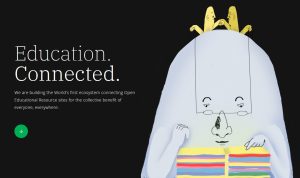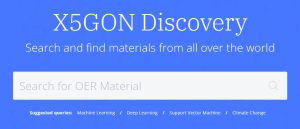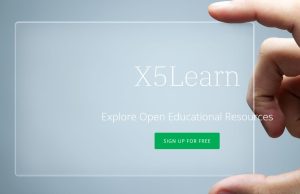Additional Content
X5GON

Searching for educational resources is important for teachers, especially when preparing a new lecture, exploring a new field or subject, or preparing an activity. This material (courseware) can be just for documentation, but sometimes the teacher might want to build new courseware from it. It is tempting and intellectually legitimate to not reinvent the wheel and to use an intelligent form of copy-paste. Of course this is often not legal, as it breaks copyright laws.
When the authors of the resources licence their work with Creative Common licences, the resources become Open Educational Resources and the teacher can reuse, transform, remix and redistribute them freely. The only obligation, usually, is to quote the original author correctly. It is therefore important to identify when a resource is open or not.
There are some collections and repositories of well-licenced open educational resources and your ministry probably has one. But what about finding these resources anywhere on the web? Can we make use of a specific search engine for this?
Project X5-GON was funded by the European Union to find and index OER, to use artificial intelligence to curate these OER and propose AI tools, typically search tools, allowing users to better find OER.
Where does the AI appear in such a process?
It will appear in all stages:
During the ingestion stage, robots will scrap the web and return OER: this is a complex process as it means recognizing the OER and therefore the licences. Part of it can be seen as a typical classification task (a common AI task).
When the robot has found a resource, the text from this resource has to be recovered. When the resource is an audio or a video file, this means using transcription.
 The 5 in X5-GON refers to the 5 barriers or dimensions the project wished to address: one of these being language. So, the next step of the process is to use automatic translation tools to obtain text versions in each of the chosen languages. Again a typical AI tool.
The 5 in X5-GON refers to the 5 barriers or dimensions the project wished to address: one of these being language. So, the next step of the process is to use automatic translation tools to obtain text versions in each of the chosen languages. Again a typical AI tool.
At this point you may wonder: automatic transcription and translation are fast-growing technologies. But they still make serious mistakes. Isn’t it dangerous to rely on these? The answer is that search and recommendation algorithms don’t need the exact text. They need to position the document in a space, next to keywords and other documents.
Think about a box full of old papers that you need to organise. Ideally you would want to have a preset organisation, and file each paper in the right place. But we usually don’t have this pre-existing filing system, and end up putting the papers close to each other when they have things in common, with unwritten rules of all sorts. These two papers go together because they are from the same year, these two because they are related to cars, these two because they’re the same size, and so forth. The key term here is “next to”. We will discuss this later in the book.
 Once Once raw texts have been extracted, models can be built. Documents will become vectors in some high dimensional space, and comparing vectors will allow us to answer questions, such as: which ten documents are most similar to this one? Which five documents best match this keyword?
Once Once raw texts have been extracted, models can be built. Documents will become vectors in some high dimensional space, and comparing vectors will allow us to answer questions, such as: which ten documents are most similar to this one? Which five documents best match this keyword?
Richer models can be obtained through training. They can answer more complex questions:
- How difficult is this course? The answer can perhaps be somewhere in the course description, or in the meta-data. This is data that’s hidden from the viewer but which are supposed to give information about a document. More likely, they can be obtained through automatically analysing the document. The lengths of sentences and words, and the words themselves, are strong indicators of the age for which a course was intended.
- Should I look at this courseware before this other one? This is the prequel to be able to have a full course built automatically from given courseware.
What is the quality of the course? This is a difficult question for AI to answer. By attempting to answer it, AI could do more harm than good. Nevertheless, being able to find out if the facts in a course are correct makes sense. After fake news, will we have fake courses?
Some links
X5-Discover (https://discovery.x5gon.org/) is a search engine.
The learning platform X5-Learn (http://x5learn.org/) allows to choose one’s courseware and get the AI to organize it in the best order. In this case, a recommendation engine is used.
More X5-GON tools (an API for developers, a version to be installed in Moodle) can be found here.
The X5GON project was funded by the European Union’s Horizon 2020 research and innovation program grant number 761758.
